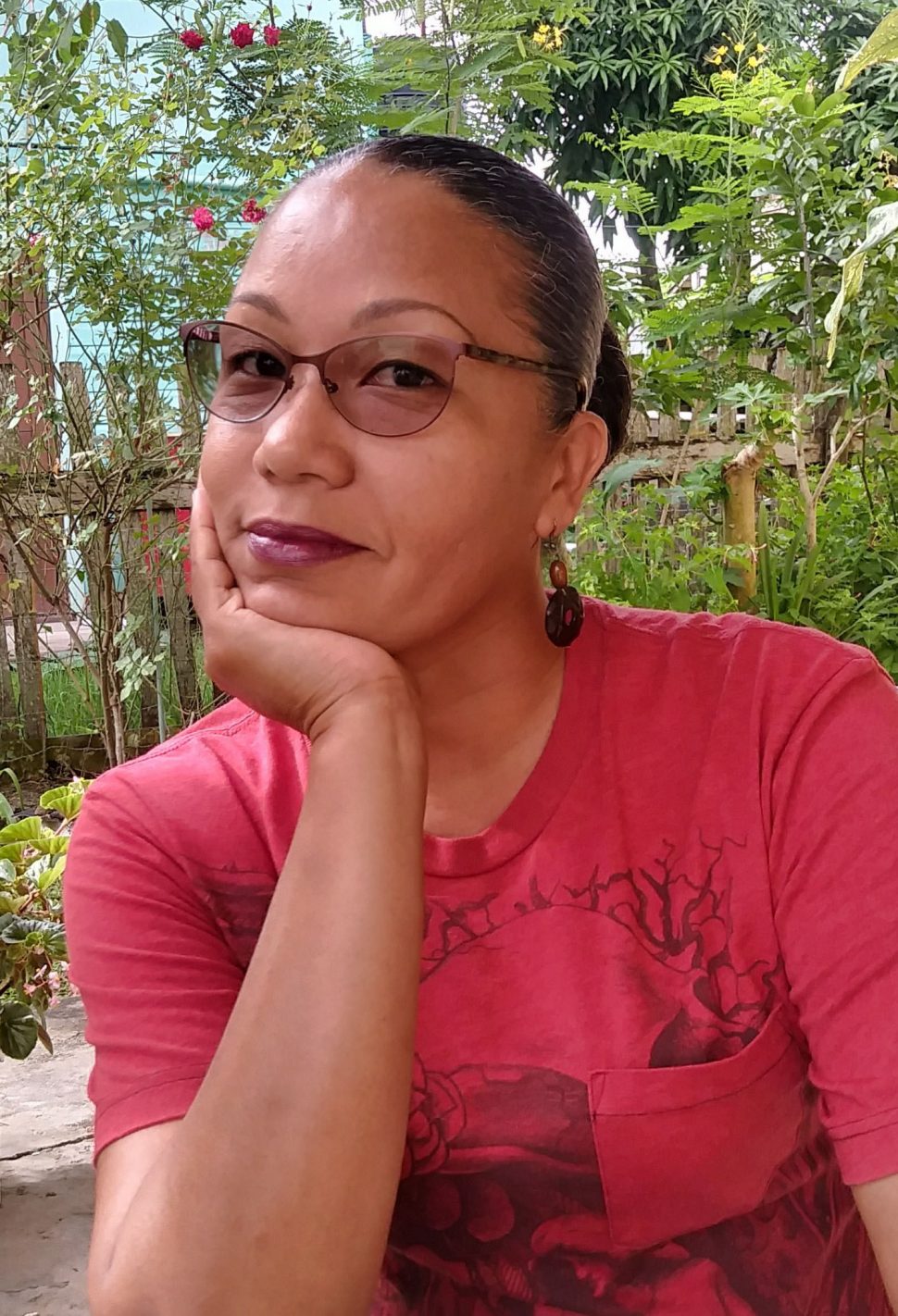 Curated by Andre Haynes and Dreylan Johnson
Curated by Andre Haynes and Dreylan Johnson
Cosmata Lindie, the writer of “The Birds,” is a 45-year-old clerical assistant who lives in New Amsterdam, Berbice.
An avid reader since she was a child, Lindie, who is originally from Kwakwani, Berbice River, says her immersion in and love of the literary arts was closely tied to her relationship with her father, who “wrote so extensively all his life that there were literal trunks, boxes and shelves filled with his writings at home”.
Although she says not many people know it, her love for reading has led her to try her hand at writing a few short stories, which she hopes to publish in a collection. “The Birds” is among them.
“The Birds was written in 2011. I was then living in a house in Stanleytown, New Amsterdam that was located almost on the banks of the Berbice River. You could look across the river (before the bushes grew too tall) to Blairmont on the West Bank of Berbice. I used to, (still do) get up very early at 5 am to cook lunch for myself and son to take to work and school and the kitchen window overlooked the banks of the river a few hundred yards away. There were lots of trees and bushes along the waterfront, and almost every morning there would be these large white birds (herons I think) roosting in the branches. Hundreds of them sometimes. They came late in the evenings and left early in the mornings (for their hunting grounds I suppose). I used to watch them and my descriptions of them in the story is exactly how they looked to me,” Lindie explains.
According to her, the idea for the story came suddenly one morning and, consumed by the plot, she completed the first draft within three days during breaks from work. However, she notes that the story has undergone several revisions since then, with the last cut being in 2017.
Death and transformation are common themes in her work and she points out that the themes dominant in the story were influenced by current affairs, and her desire to educate through her craft, as she has seen the effects of poverty and ignorance and the social ills that result from them.
“My decision to make the main character a victim of physical and sexual abuse was deliberate as this is something you often see and hear about happening to young girls and women all over this country and the world in general, and too often it is just accepted as a norm. Since she is just a child herself she is not responsible for what happens to her and the people who are supposed to protect and nurture her are the ones forcing her to continue what, for them, is the way of life. It is pretty obvious that the girl’s life is just a continuation of her mother’s and her mother before that. Her husband, and father, too, although they are the perpetrators of abuse to the women, are also victims of ignorance too, since what they are doing is what they have seen their fathers do. Ignorance is a formidable foe and education and mental transformation are the only ways to rise above it,” Lindie further says.
“In this story the transformation that allows the girl to escape happens literally. Also, you must really, really want it in order to make it happen. You will notice that I choose to keep almost all my characters, nameless. I also avoided naming any specific geographic location as I wanted the focus to be on the emotional tensions and transformations taking place without getting caught up in physical descriptions or referring to them by name. The setting, descriptive terms, all of it was done to maintain a sense of tension and build up to the final paragraphs,” she adds.
Lindie notes that while there are many books and writers that she loves, the two in particular that she has been drawn to and influenced by are John Steinbeck and Hans Christian Andersen. “I won’t be surprised if you hear echoes of them both occasionally. Having said that, I do have a fondness for science fiction or anything out of the ordinary,” she reveals.
Apart from writing, Lindie also draws, paints and enjoys gardening in her spare time.






